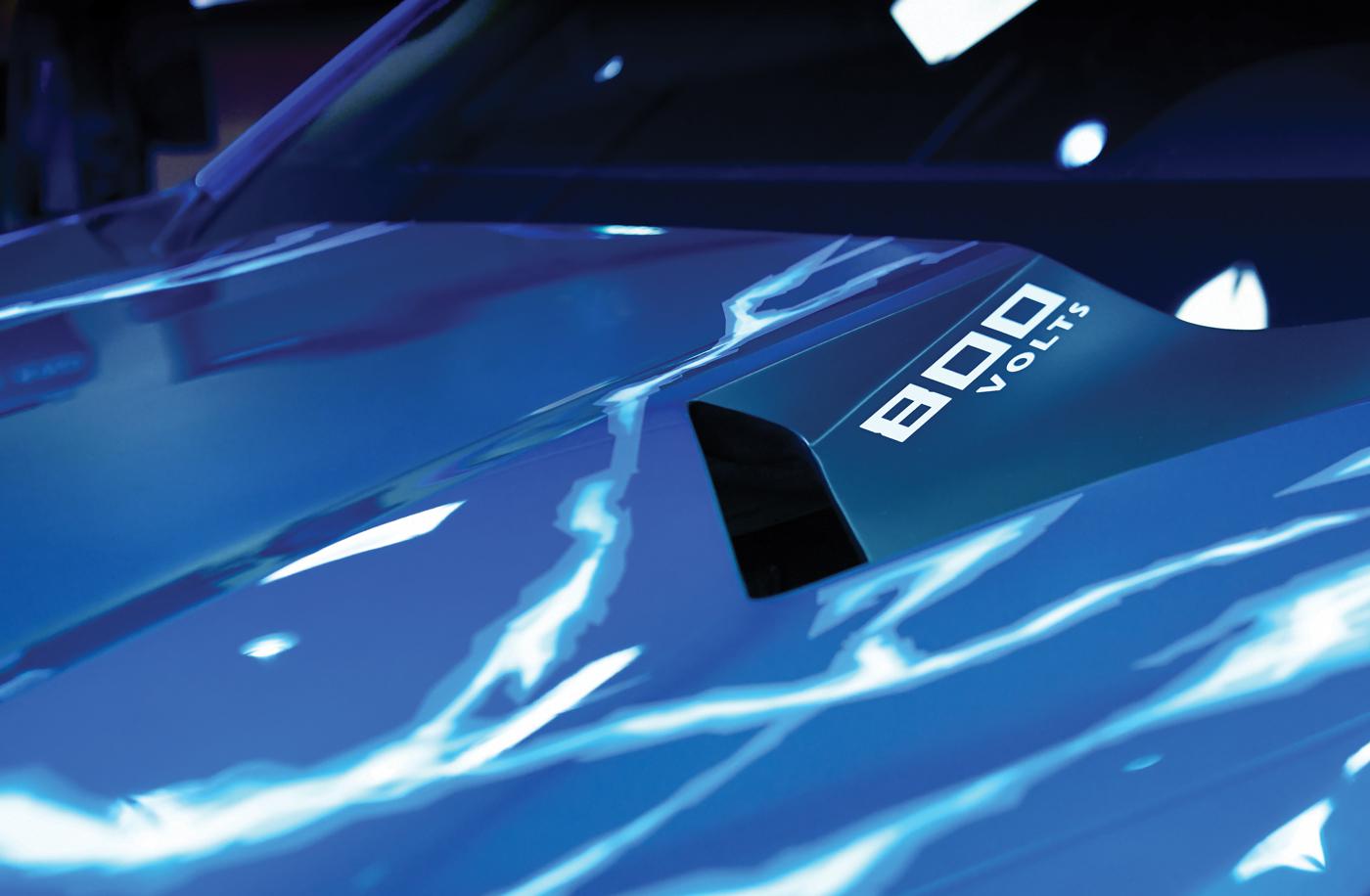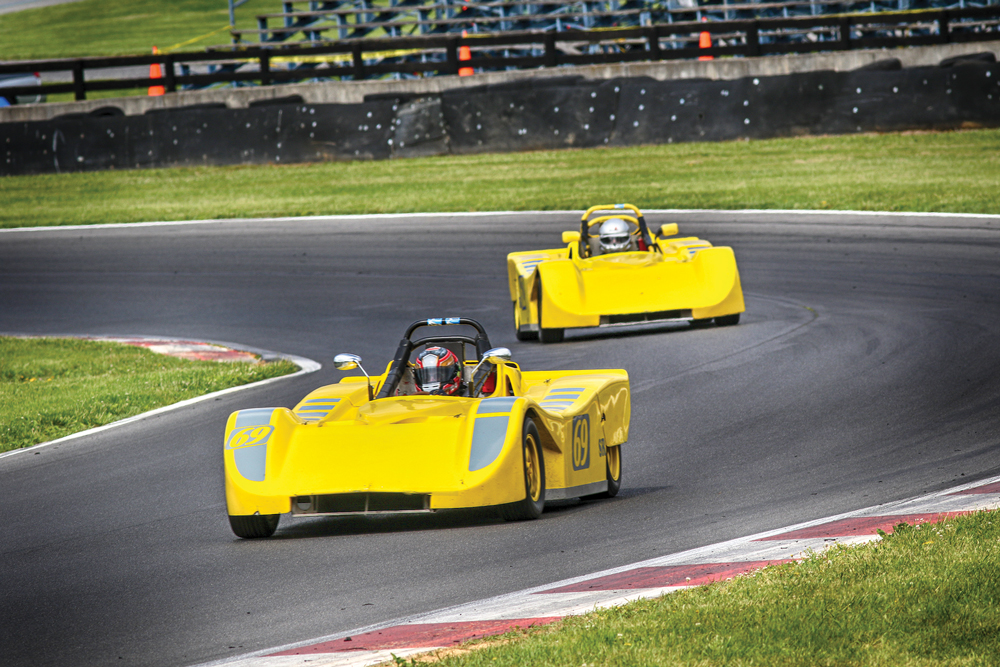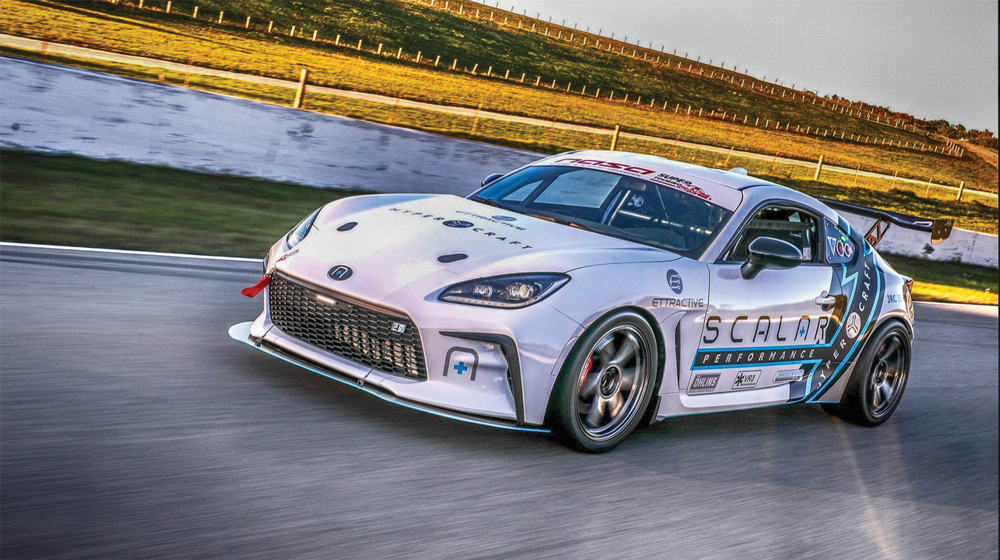Challenging The Grid

Electric vehicles are poised to change the automotive landscape in the coming years, but there’s still much work to be done to properly integrate them into motorsports.
While we’re still in the early days of the automotive industry’s collective shift toward electrification, there’s no question that EV technology is becoming a regular topic of conversation in the motorsports realm. It may still be a while before we see cars lining up at the 24 Hours of Le Mans that are motivated solely by electricity, but to be ready for that day, the pieces need to be in place to make it work.
As it stands now, much of the discussion is focused on the unique safety challenges that these types of vehicles bring to the table. At the moment, there’s a sense that many organizations are taking an ad hoc approach to those concerns, likely due in part to the fact that EVs currently represent a small fraction of the car count at most events. But mounting evidence indicates that this tech will become a common sight in various racing disciplines sooner rather than later.
“We’re already starting to see a lot of it in the NHRA,” said Danny White of White Services Group, Indianapolis Indiana. Formerly the director of motorsports at Purdue University, White also oversaw the evGrand Prix racing program, which brings together college teams from across the country to compete in student-built, lithium-ion battery pack-powered karts. “I also think IMSA will embrace it more and more as we go forward, and I know that USAC has reached out to us about electrifying a midget for demonstration. Who knows where they might go with that, but it’s clear that EV technology is taking on greater importance in motorsports.”
As this interest builds, many sanctioning bodies and tracks are finding themselves at an early crossroads where they must choose between supporting this emerging technology or shying away from it, and some are choosing the latter. Although the rationale behind some of that trepidation isn’t without merit, some of the biggest challenges may be easier to address than they appear at first glance.
Extinguishing Concerns
While shock risk and vehicle weight—which, in some disciplines, could potentially be nearly double that of a typical ICE-powered entry—are significant aspects of the EV motorsports safety discussion, vehicle fire response continues to be the largest challenge facing organizers today. The focus isn’t necessarily on the driver, though. Rather than quickly igniting and rapidly engulfing an area, as gasoline fires often do, the threat of injury from a battery fire is fairly low because it typically takes much longer for the flames to spread.

While statistics have proven that EVs are much less likely to catch fire after an incident than their ICE counterparts, the concern is that once a battery fire starts, it can be incredibly difficult to put out. Along with the unique chemistry involved in these types of fires (which necessitates the use of specific fire retardants in order to efficiently respond), the battery packs used in production vehicles are usually designed as enclosed, reinforced units to protect them from damage by outside elements, and that can make it very difficult to get the fire retardant where it needs to be to put the fire out. As a result, the risk of property damage by an EV fire—be it to the road surface below it or structures around it—is a serious concern for some track owners.
“Right now, there’s really no definitive procedure for fighting these types of fires,” said John Metric of the National Electric Drag Racing Association (NEDRA), Lake Jackson, Texas. “The perpetuating story is that you have to douse it with many thousands of gallons of water, and then that water becomes a hazardous liquid pollutant on the track afterward. And if you don’t have the right equipment to respond to it, you may end up having to shut down the event.”
Metric added that one response method that’s gained traction in recent years is simply to pick up a burning EV with a front loader or crane and move it to a designated location in order to fight the fire while mitigating potential damage to the track. But other solutions are also beginning to emerge. The Scalar SCR1, for example, is a purpose-built EV road race car that has a fire suppression system that runs through the battery itself, allowing the agent to get directly to the source of the fire. There’s speculation that OEMs may begin to incorporate special ports into their battery pack designs to make it easier for first responders to get that agent where it needs to be in production vehicles, too.
In the meantime, companies like Rosenbauer International are also developing firefighting equipment that’s meant to deal with EVs specifically. Its Battery Extinguishing System Technology (BEST) uses a low-profile design that makes it easier for firefighters to access the undercarriage of the vehicle, where most battery packs are mounted in road-going EVs. The system uses a high-pressure nozzle that can pierce through the casing. According to details from Rosenbauer, about 260–1,000 gallons of water are typically needed to bring an engulfed battery pack down to a safe temperature, a fraction of what’s often required when responding to an EV battery pack fire with conventional equipment.

Fire suppression additives like the F-500 Encapsulator Agent—which is readily available on the market now—are also said to provide more effective EV fire response with traditional gear, but others cite the use of different battery chemistries as a better way to address the problem.
“The chemistry in most road-going cars is lithium-ion,” noted Charlie Greenhaus of Entropy Racing, Sacramento, Pennsylvania. “That’s one of the most volatile battery chemistries out there. For our EV race car, we chose a lithium ferro-phosphate chemistry because we felt it would be safer in that regard. We took about a 15% weight hit because of that, but we felt that this chemistry would be more readily accepted by organizations because of the safety benefits.”
Modernizing The Curriculum
Heyward Wagner of the Sports Car Club of America in Topeka, Kansas, told us that one of the larger obstacles facing sanctioning bodies with EV integration into their programs is simply a lack of foundational knowledge. While internal combustion cars have been commonplace for more than a century, EV platforms and technology have not, and this disparity has implications on several levels.
“I think the biggest challenge for a sanctioning body in 2023 is that a Mazda Miata can’t really get into a situation that we don’t already know how to get it out of. We know how to pick one up off of a tire wall, we know how to turn one over after it’s flipped, and we know how to quickly put it out if it catches fire. It really doesn’t matter what a Miata does at a race track because we already know how to solve for that. Right now, as far as institutional knowledge within the organization goes, we can’t say the same for a Tesla Model 3.”

That knowledge base will inevitably grow as time goes on, but in the here and now, White said that specialized training for first responders is vital. “It’s definitely a situation where you don’t know what you don’t know. You’ve got folks all around the country who work races, and they’re first- or second-class firefighters. The problem is that this situation not only takes a firefighter, it also takes a HAZMAT technician. So, in order to effectively work an EV race, they need to be trained for that as well. There are a lot of factors involved that they may never have had to consider before, and that changes a lot of things.”
Greenhaus also explained that more comprehensive EV-specific knowledge is going to become increasingly crucial for proper tech inspection as well. “Another very real problem right now is that, while we don’t lie to sanctioning bodies about what’s in our car or how it’s designed, they wouldn’t know if we did,” he said. “They’re either going to believe you, or they’re going to spend a bunch of time and energy for a very small portion of their participants. Most of these organizations just don’t have the internal capacity to verify some of these things. It’s not like an engineer looking at a roll cage. It’s much more complex than that.”
Wagner agreed. “When you start talking about the more home-built stuff—whether that’s an EV swap into a platform that was formerly ICE-powered, or some sort of custom EV Formula car, or something like that—probably our biggest challenge is finding another person, aside from the person who built that car, who can look at it with an educated eye and do a technical inspection on it,” he explained.
Updating Best Practices
Even though we’re still in the early adopter phase of EVs in motorsports, sanctioning bodies are beginning to establish comprehensive rules packages that should help keep the playing field level and minimize confusion for would-be EV racers.

“The NHRA recently did their first major rework of their EV rules in more than 15 years,” said Metric. “This is the first version that wasn’t just basically a straight copy of the NEDRA rules. We worked together with the NHRA to put together a package that makes sense for them, and they’ll be using them for this year’s Summit Super Series. We had around 10 EV entries in the series last year. They were still dwarfed by the number of internal combustion cars there, but it’s growing. You add a few cars each year, and pretty soon, you have a significant impact on it. The performance of these cars is very repeatable, and that’s what wins drag races.”
He added that the ruleset’s battery design mandates should address concerns about how to properly respond to EV fires. “As far as custom drag cars go, this NHRA ruleset revision has a pretty good take on how to get water into each battery case, and the requirement of a vent on the bottom so it’s venting downward. It covers the construction materials and firewall design as well. It took us months of deliberation to establish something that everyone was satisfied with, and it seems to be a good approach.”
From Wagner’s perspective, at this stage it ultimately comes down to proper preparation. “Autocross, for example, has existed for a very long time with the idea that if you have a fire, you’re going to use a fire bottle. And you’re going to call local emergency services to bring a fire truck if needed—it wouldn’t be onsite. So, for an autocross event with electrified vehicles, it means things like having a specialized fire bottle onsite, along with high-voltage gloves and things like that. It’s about figuring out how to get to a level of equivalency with our ICE response.”
That same perspective should be shared by EV racers, he said. “I think you have to understand that, when you show up at an event with an EV right now, it’s not likely that there’s going to be a lot of organic knowledge already there for you. So it’s going to be important for these early adopter drivers to educate themselves, so they understand things like how to jack the car up, what to do if the vehicle needs to be towed, what warning lights mean, and what needs to be done in order to make sure the car is fully off.”
But as Metric pointed out, the larger integration of EVs into motorsports is likely to be a gradual process rather than the flip of a switch. “The bigger shift will happen when these cars are out of warranty, the dad is handing the car down to the kid, and the kid wants to hot rod it. At that point you’re talking about hacking the computer, figuring out what can be removed from the car to lighten it, and that kind of thing. I think that when that cycle starts, things will ramp up. But when a car starts at $100,000, that doesn’t happen very quickly.”
SOURCES
Entropy Racing
facebook.com/entropy.racing/
National Electric Drag Racing Association (NEDRA)
nedra.com
Sports Car Club of America (SCCA)
scca.com
White Services Group
 MEMBERSHIP LOGIN
MEMBERSHIP LOGIN JOIN PRI
JOIN PRI


